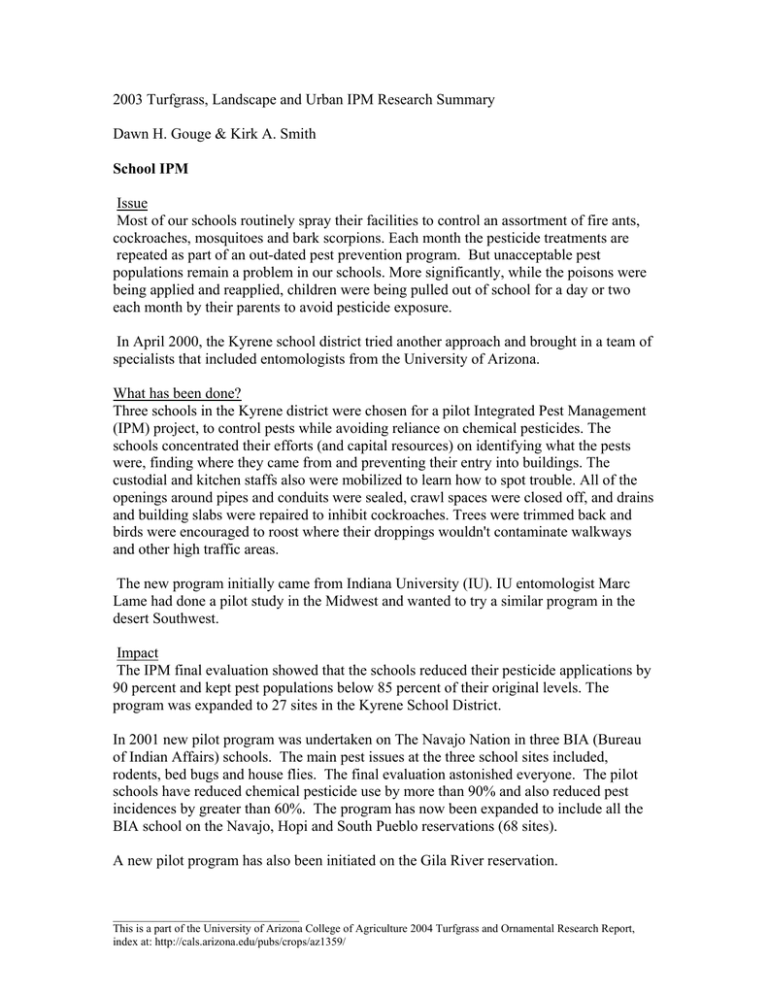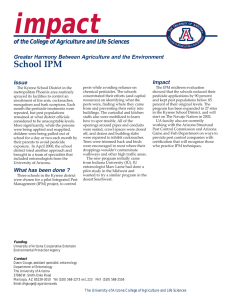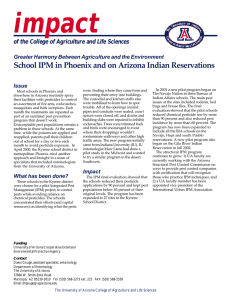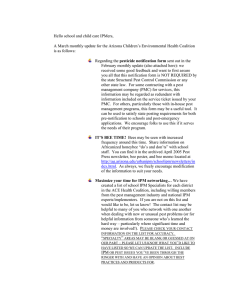2003 Turfgrass, Landscape and Urban IPM Research Summary Issue
advertisement

2003 Turfgrass, Landscape and Urban IPM Research Summary Dawn H. Gouge & Kirk A. Smith School IPM Issue Most of our schools routinely spray their facilities to control an assortment of fire ants, cockroaches, mosquitoes and bark scorpions. Each month the pesticide treatments are repeated as part of an out-dated pest prevention program. But unacceptable pest populations remain a problem in our schools. More significantly, while the poisons were being applied and reapplied, children were being pulled out of school for a day or two each month by their parents to avoid pesticide exposure. In April 2000, the Kyrene school district tried another approach and brought in a team of specialists that included entomologists from the University of Arizona. What has been done? Three schools in the Kyrene district were chosen for a pilot Integrated Pest Management (IPM) project, to control pests while avoiding reliance on chemical pesticides. The schools concentrated their efforts (and capital resources) on identifying what the pests were, finding where they came from and preventing their entry into buildings. The custodial and kitchen staffs also were mobilized to learn how to spot trouble. All of the openings around pipes and conduits were sealed, crawl spaces were closed off, and drains and building slabs were repaired to inhibit cockroaches. Trees were trimmed back and birds were encouraged to roost where their droppings wouldn't contaminate walkways and other high traffic areas. The new program initially came from Indiana University (IU). IU entomologist Marc Lame had done a pilot study in the Midwest and wanted to try a similar program in the desert Southwest. Impact The IPM final evaluation showed that the schools reduced their pesticide applications by 90 percent and kept pest populations below 85 percent of their original levels. The program was expanded to 27 sites in the Kyrene School District. In 2001 new pilot program was undertaken on The Navajo Nation in three BIA (Bureau of Indian Affairs) schools. The main pest issues at the three school sites included, rodents, bed bugs and house flies. The final evaluation astonished everyone. The pilot schools have reduced chemical pesticide use by more than 90% and also reduced pest incidences by greater than 60%. The program has now been expanded to include all the BIA school on the Navajo, Hopi and South Pueblo reservations (68 sites). A new pilot program has also been initiated on the Gila River reservation. _________________________________ This is a part of the University of Arizona College of Agriculture 2004 Turfgrass and Ornamental Research Report, index at: http://cals.arizona.edu/pubs/crops/az1359/





